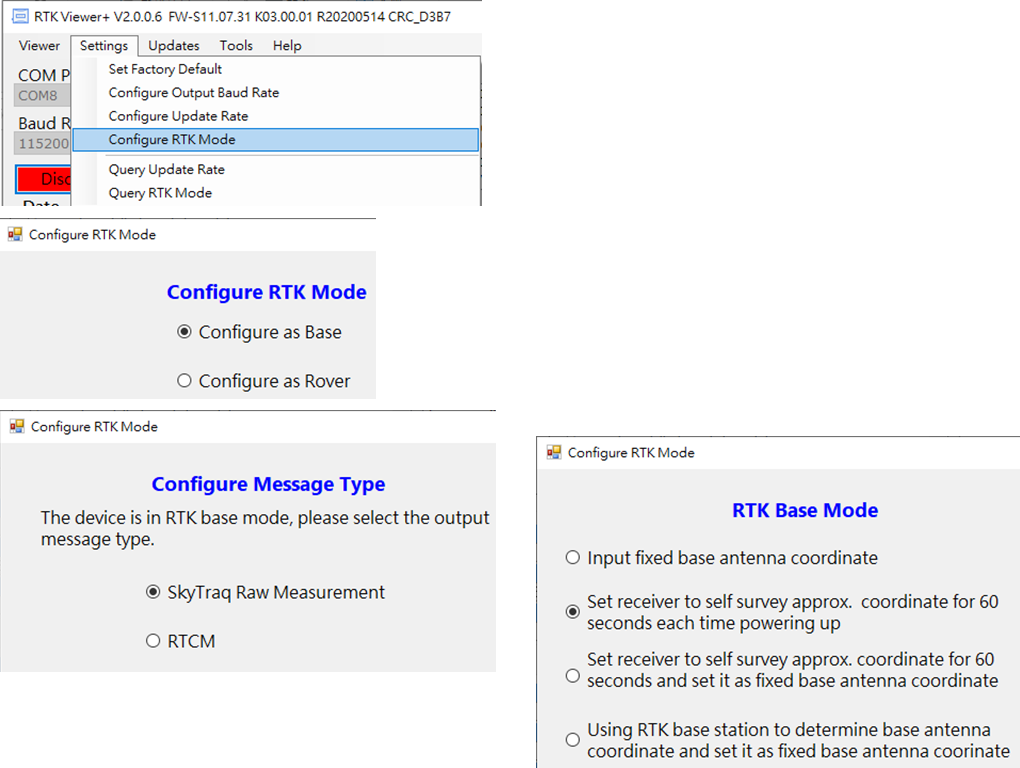.
The dual frequency nature of Alpha+ makes surveying at place without Internet or mobile phone coverage possible. Assume a pair of Alpha+ receivers are used for base and rover operation:
1. Setup base receiver to be in base mode to output in RTCM format and log to the SD-Card for duration of rover receiver doing surveying; should be at least 2 hours or more. See section 8 of the User Guide on data recording.

2. Setup rover receiver to be in base mode to output in raw measurement format. At each location to survey, log raw measurement output to the SD-Card for a minute or two.

When done, the base receiver SD Card will have a single larger size RTCM log file, and the rover receiver SD Card will have multiple smaller size raw measurement log files.
3. Back in the office, convert the base RTCM log file to RINEX format using RTKLIB's RTKCONV. Convert the rover raw measurement log files to RINEX format using http://polaris-gnss.com/alpha/DF_RINEX_Converter.zip
4. Upload the base RINEX file to online PPP service (AUSPOS, CSRS-PPP, OPUS, APPS,…) to get the base receiver location, to be used for later RTKLIB's RTKPOST post-processing.
5. Use RTKPOST to post-process the base RINEX log file against the rover RINEX log files, using step 4 PPP-derived location as the base receiver location.
The relative locations of the rover with respect to the base will be better than 7mmm + 1ppm. The PPP-derived base location accuracy will depend on duration of the raw measurement log file. Rule of thumb is better than 10cm for 2hr log file, better than 2cm for 24hr log file.
We're sorry. New comments are no longer being accepted.
3 people will be notified when a comment is added.
Would you like to be notified when a comment is added?
Please login or register first.
